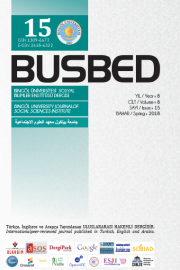BİNGÖL ALEVİLİĞİNDE DEDELİK MUSAHİPLİK DÜŞKÜNLÜK VE CEM
Dedelik, Musahiplik, Düşkünlük And Cem In Bingöl Alevism
Author(s): Yılmaz IRMAK, Handan HAMARATSubject(s): Theology and Religion, Islam studies
Published by: Bingöl Üniversitesi Sosyal Bilimler Enstitüsü
Keywords: Bingöl Alevism; Dedelik; Cem Ritual;
Summary/Abstract: Alevism can be called a religion path that traces Caliph Ali, sets their hearts on Family of the Prophet Mohammed, and that has gained speed after the martyrdom of Caliph Huseyin in Kerbela having continued since centuries forming a new style in Anatolia with the effect of pre-Islamic Turkish beliefs. Alevism was firstly formed around the claims that Caliph Ali should have been the first caliph after the passing away of the Prophet Mohammed. Alevism, which emerged in the 11th century and which has been developing since the 13th century, has impersonated to a synthesis of the Islamic view with the motifs brought by the Turks before they were not Muslim, in a style intrinsic to these lands. In many cities of Turkey, today, a great number of Alevi societies spring to life. One of these cities is Bingöl of in the Eastern Anatolian Region. The Nosairians live notably in the centre of Bingöl and its villages together with some towns such as Adaklı, Kiğı, Yayladere, Karlıova and Yedisu. In this study, belief institutions of Bingöl Alevism, recorded with the field works, like Dedelik (Fathership), Musahiplik (Companionship), Düşkünlük (Fondness) and Cem Ritual was approached and analysed. As a conclusion; it was determined that belief elements of Bingöl Alevism continues its existence in the region and functions its basic despite some alterations and changes.
Journal: Bingöl Üniversitesi Sosyal Bilimler Enstitüsü Dergisi (BUSBED)
- Issue Year: 8/2018
- Issue No: 15
- Page Range: 211-232
- Page Count: 22
- Language: Turkish

